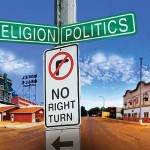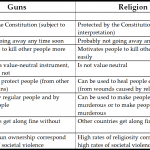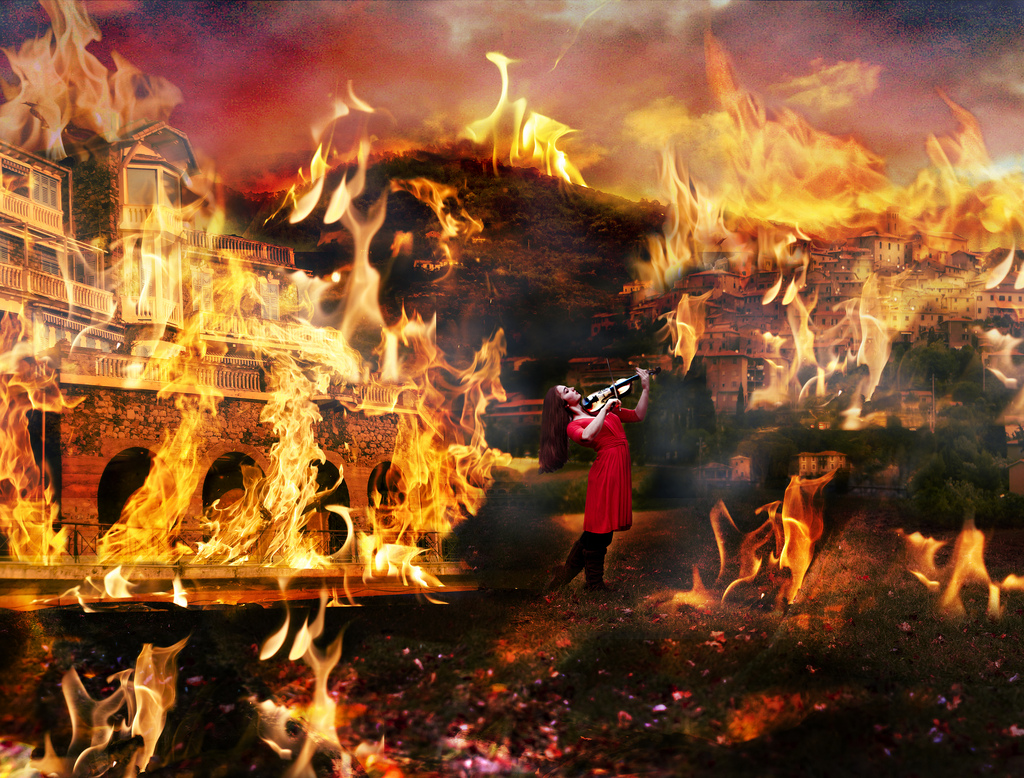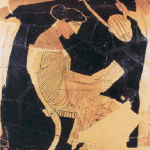Ray’s conversion to Islam and the challenge to my liberal values
Recently, a friend of mine — let’s call him “Ray” to protect his privacy — converted to Islam. I have some concerns about Ray’s conversion. He’s just gone through a depressive period following the loss of a job, an injury to his back, and a breakup with his girlfriend — and he was thinking about suicide. I was concerned that he was not making rational decisions.
In spite of these things, I was prepared to be open-minded about his conversion when he came to visit me. In fact, we’d just had a sermon at my Unitarian church about Islam. (I was especially moved by an azan — call to prayer — which was played.) And to be honest I was looking forward to demonstrating my liberal-mindedness about Islam, as compared to Ray’s and my other friends. When he come to visit, Ray showed all the enthusiasm of a new convert. He wanted to share his newfound faith and, if possible, even convert others. I was ready to listen. But then he started speaking in literalist, absolutist, and exclusivist terms and I grew more and more uncomfortable: The Koran was received directly from the “mouth” of God. Arabic is the most perfect language. Islam is the culmination of all religious revelation. Islam is so complete that no further revelation has been needed for centuries. Islam is really just logical.
None of this is all that shocking in itself, since most of these are tenets of Islam. What was shocking was to hear it coming from my friend Ray. Ray is an intelligent and articulate person. He was raised Mormon like me, and like me he rejected the faith as an adult for many of the same reasons, including (or so I thought) its literalism, absolutism, and exclusivism. Thereafter, he adopted a stance somewhere between atheism and pantheism (also like me), but he had no particular spiritual practice that I know of. I had a hard time not seeing his conversion as a kind of regression.
And then I really started to get concerned when Ray started in on the anti-Zionist talk, which bordered very closely, in my mind, to anti-Semitism. And finally, he brought up 9-11, and told me what he tells people when they ask him about it. Rather than condemn the perpetrators, he criticized American foreign policy. He implied the attacks were justified. Now, I have the same concerns about American foreign policy as he does, but that would not be my first response — as a Muslim or as a Pagan — if someone was asking me about 9-11. In my mind, there is only one right response to a question about 9-11 and this to condemn the attacks unequivocally. What’s even more disturbing was that he says the people he goes to mosque with consider Osama bin Laden and Saddam Hussein to be heroes! And supposedly these are “moderate” Muslims he is worshipping with. This was not the kind of Islam that the recent sermon about Islam at my Unitarian church had prepared me for. Ray was quick to say that the Islamic concept of jihad does not justify holy war, and he repeatedly said that Islam is a religion of peace. But I was not mollified.
In spite of all this, Ray seems happier and more positive than I have ever seen him. He spoke in glowing terms about the release of guilt that he felt. He described his conversion moment (which preceded his formal conversion) in terms that I recognize as authentic religious experience. I especially found his religious practice of praying multiple times a day and fasting during Ramadan to be impressive. So, I found myself struggling with what to say. I tried to ask some critical questions that might get him thinking about some of the conclusions he was drawing from his experience. It’s a long way from feeling the approbation of divinity to concluding that a book contains the fullness of God’s revelation and another leap from there to the political conclusions he was drawing. But Ray seems to have made the leaps in a single bound. For the most part, I checked my responses, reminding myself that only a few weeks prior to his visit he was suicidal. If his choices are suicide or religious fundamentalism, then I found it difficult to gainsay his choice of the latter.
Jung’s patient and the rationalist critique
Ray returned home, but I continue to struggle with this issue of how to respond responsibly. Then I came across a discussion by Carl Jung in his Terry Lectures of a patient of whose neurosis* was healed by a religious experience. Jung does not record what the specific nature of the neurosis was, only that the patient had come to him “because of a very alarming experience” and that the neurosis “had become overpowering and was slowly but surely undermining his morale”. Certainly the same could have been said of my friend Ray a few weeks before his visit. Jung described his patient as a non-practicing Catholic who was not interested in religious matters: “He was one of those scientifically minded intellectuals who would be simply amazed if anybody should saddle them with religious views of any kind.”
Jung instructed the patient to record his dreams, which were then conveyed to Jung, but not analyzed, in session. One of the dreams which stood out for Jung was one with obvious religious meaning. This was remarkable itself, because the patient did not consider himself religious. Eventually, the patient’s dreams culminated in a visual image of a mandala, a symbol which Jung interprets as representing the wholeness and resolution of conflicting opposites in the Self or God. But Jung did not share this interpretation with the patient until later. This image gave the patient the “impression of the most sublime harmony” and, according to Jung, had a deeply transformative influence on his condition. The dream was a turning point in his psychological development. Jung says, “It was what one would call–in the language of religion–a conversion.” (I myself have had a similar experience of personal transformation — albeit on a more limited scale — through a religious symbol. I wrote about it here.)
What’s remarkable about this is that this transformation occurred prior to any analysis. In fact, there was no real intervention by Jung at all, except to suggest to the patient that his dreams would provide the answer to his problem. The patient’s transformation, then, was not a rational process, but a spiritual one–or a psychological and emotional one, if you prefer. And this is why Jung compares it to a religious conversion. In fact, not only was the patient’s transformation accomplished without the aid of reason, it was accomplished through the surrender of reason.
Allow me to explain. The Terry Lectures were given in 1937, and Jung had probably treated this patient years or even decades earlier. It is difficult today, after the influence of Freud and Jung have so thoroughly saturated our culture, to imagine a time, a century ago, when most people would have thought that finding meaning in dreams was superstitious. Jung writes of informing another patient “at the risk of shocking him severely” that his dreams would provide all the necessary information to get at the root of his neurosis. And he describes the idea that we should take dreams “as if they issued from an intelligent, purposive, and, as it were, personal source” as a “bold hypothesis”. Thus, Jung’s patient’s willingness to take his dreams seriously, given the prejudices of his time, was a kind of surrender of his rationality. Jung writes:
Being highly rationalistic and intellectual he had found that his attitude of mind and his philosophy forsook him completely in the face of his neurosis and its demoralizing forces. He found nothing in his whole Weltanschauung [worldview] that would help him to gain sufficient control of himself. He was therefore very much in the situation of a man deserted by his hitherto cherished convictions and ideals.
Although the patient’s “conversion” was (to my mind) more benign than my friend Ray’s, both are essentially the same kind of experience — a sacrifice of critical faculties that leads to spiritual transformation and greater personal wholeness.
Jung then proceeds to describe similar effects of dream images on other patients:
“Others will confess that a similar vision came to them in a moment of extreme pain or profound despair. To others again it is the memory of a sublime dream or of a moment when long and fruitless struggles came to an end and a reign of peace began. If you sum up what people tell you about their experiences, you can formulate it this way: They came to themselves, they could accept themselves, they were able to become reconciled to themselves, and thus were reconciled to adverse circumstances and events. This is almost like what used to be expressed by saying: He has made his peace with God.“
This is an excellent description of my friend Ray’s state when he visited me.
Jung concludes his essay by responding to the hypothetical rationalist to whom the account above might sound “crazy”. Jung responds by noting that he is not making any metaphysical claims about God, only theorizing about the effect of religious symbols on the psyche. “It is a fact,” Jung says, “that my patient felt a great deal better after the vision of the mandala.” Jung goes on to say that for many people the embrace of these kinds of experiences is a matter of psychological survival: “[They] have to take their experience seriously if they want to live at all. They can only choose between the devil and the deep blue sea. The devil is the mandala or something equivalent to it and the deep blue sea is their neurosis.” And this was the dilemma I found myself in during Ray’s visit: I saw my friend caught between the “devil” of religious fundamentalism and the “deep blue sea” of suicidal despair.
Jung notes that the “well-meaning rationalist” would point out that he is “replacing an honest neurosis by the swindle of a religious belief”. Jung responds that a religious experience is its own truth: “[I]t is not a question of belief but of experience. Religious experience is absolute; it cannot be disputed. You can only say that you have never had such an experience, whereupon your opponent will reply: ‘Sorry, I have.’ And there your discussion will come to an end.” I have resisted this idea in the past, the notion that religious experience must bring discussion to an end. I agree that religious experience itself is irreducible and beyond criticism, but the conclusions we draw from those experiences should not be.
But Jung questions whether we have a right to criticize religious experience when it helps a person live a more meaningful life:
“No matter what the world thinks about religious experience, the one who has it possesses a great treasure, a thing that has become for him a source of life, meaning, and beauty, and that has given a new splendour to the world and to mankind. He has pistis** and peace. Where is the criterion by which you could say that such a life is not legitimate, that such an experience is not valid, and that such pistis is mere illusion? Is there, as a matter of fact, any better truth about the ultimate things than the one that helps you to live?“
My response is to question whether we cannot have the “life, meaning, and beauty” without the “swindle of religious belief”. Can we not have the peace without the “illusion”? Can not my friend find salvation from suicide without resort to religious fundamentalism? Is it possible to find this kind of transformative experience in a liberal religion like my own Unitarianism? I don’t have the answers to these questions. I have myself often felt that something essential — a transformative experience — was missing from the rationalist Unitarianism that I participate in. (I wrote about this here and here.)
Jung seems to think that the irrationality of the experience is essential, which is why he looks to the symbols of the unconscious for help:
“They are the one thing that is capable of convincing the critical mind of modern man. And they are convincing for a very old-fashioned reason: They are overwhelming, which is precisely what the Latin word convincere means. The thing that cures a neurosis must be as convincing as the neurosis, and since the latter is only too real, the helpful experience must be equally real. It must be a very real illusion, if you want to put it pessimistically. But what is the difference between a real illusion and a healing religious experience? It is merely a difference of words.”
Jung implies that it was his patient’s rationality that was making him sick. And only the intervention of the irrational unconscious could bring the healing and wholeness he needed. Jung concludes:
“No one can know what the ultimate things are. We must therefore take them as we experience them. And if such experience helps to make life healthier, more beautiful, more complete and more satisfactory to yourself and to those you love, you may safely say: ‘This was the grace of God.’
“No transcendental truth is thereby demonstrated, and we must confess in all humility that religious experience is […] subjective, and liable to boundless error. [But] only heedless fools will wish to destroy this; the lover of the soul, never.“
I would, indeed, be a heedless fool to say anything that might destroy Ray’s peace and pistis**. And yet, I remain troubled, because the conclusions he draws from his experience are very troubling. What do you think? How would you respond if a friend found peace and healing in a fundamentalist religious belief that was intolerant? What if that belief had the potential to inspire violence against others? Have you found that liberal religion can be as transformative as fundamentalist religious experience? Or is that like having your cake and eating it too?
* “Neurosis” is a psychological crisis due to a state of disunity with oneself.
** “Pistis” is trust in God’s salvation or the inner certainty of love granted by God.















